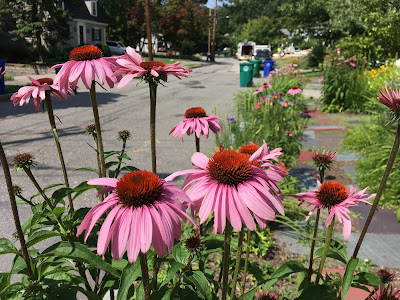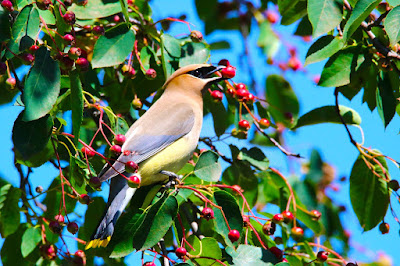 |
| Early life under lights |
This year I’m returning to the purveyors of organically-produced seeds that I had the best luck with last year. Two of my favorites are Johnny’s Selected Seeds in Maine and The Natural Gardening Company in California.
There are several areas where I aspire to improve my seed-starting performance. First, it makes a difference when I plant the seeds. If it’s too early, they spend too long in the relatively weak indoor light, become spindly and flop over before it’s time to move them outdoors.
 |
| Cosmos getting floppy |
If I start them too late, they may not be ready before hot weather sets in. This year the web site of The Farmer’s Almanac is going to send me email reminders of when to plant each vegetable, determined by my zip code.
Second, I’ve been reading about a way to germinate seeds that takes less space. You can sprout them on damp paper towels sealed in reclosable plastic bags set in a warm place in the house, such as on top of the refrigerator.
 |
| Germinating seeds |
When the seeds sprout, you grasp each tiny seedling with tweezers and plant it in growing medium. In my case, that will be Organic Mechanics peat-free seed-starting mix or homemade potting mix made from coconut fiber and compost. With this method, I won’t waste pots on seeds that fail to germinate. Germination is such a cool process. I’d love to watch it unfolding day by day.
I suspect that one reason my seedlings don’t turn out as sturdy-looking as the ones at the garden center is that I handle them too gingerly. I usually plant three seeds in each cell of a recycled six-pack. I hang back from editing that down to one seedling per cell.
 |
| These basil seedlings need room to grow |
Cutting out two with scissors would give the biggest and strongest seedling more space for its roots and more light for its leaves. Then once it’s produced a few sets of leaves, I should pinch it to encourage it to branch, instead of elongating its one stem. I’ve read that a gentle breeze from a fan makes seedlings more robust.
To get my young plants used to outdoor conditions, I move them to the back porch each morning and back indoors at night for a few days. That way they’re ready for full sunlight when it’s time to plant them out.
 |
| Hardening off on the porch |
The next stage is where I often have most attrition. This year I’ll try to protect the seedlings better when I move them to the garden. One problem is wildlife. I suspect squirrels of dining on the young plants. I’ve got some plastic cloches—clear covers--I can put over seedlings for the first week, and I should be able to rig up some protection for others with translucent fabric row cover.
 |
| Row cover |
I can’t wait to see sprouts emerging from the soil again. It’s a happy, hopeful time of the gardening year.



















